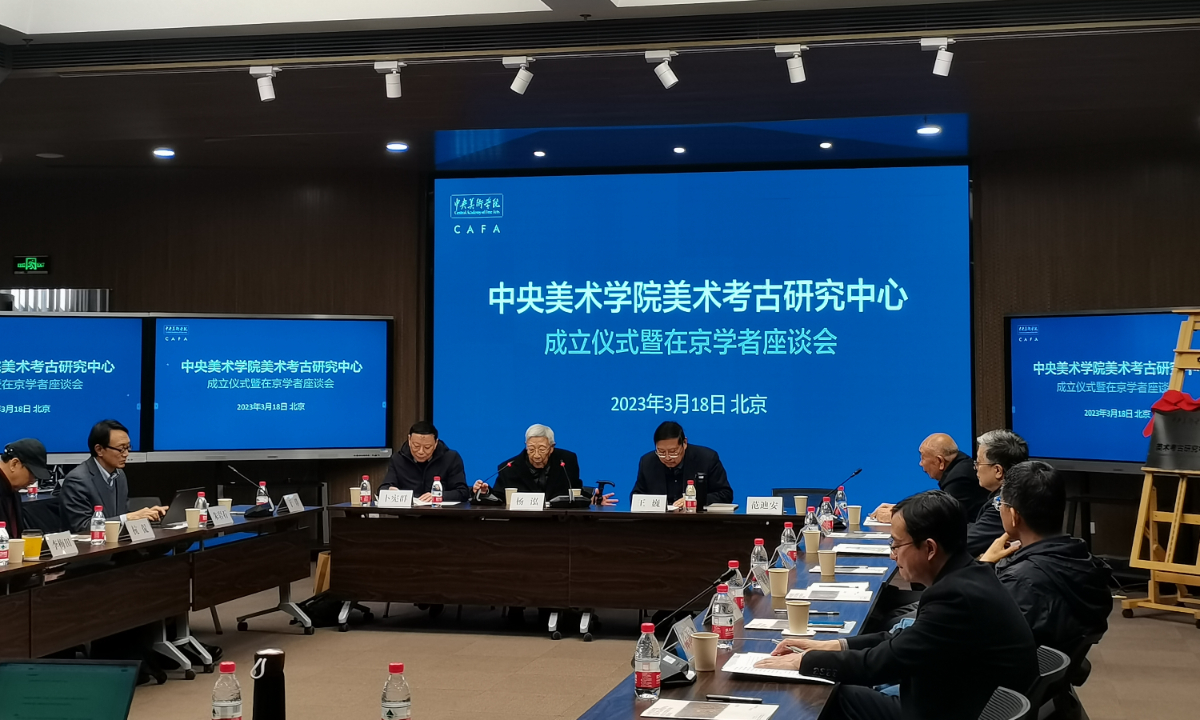
The launching ceremony of the Research Center for Art and Archaeology at CAFA on Saturday Photo: Li Yuche/Global Times
The Research Center for Art and Archaeology (RCAA), a center that merges the research of art history and archaeology, was established on Saturday at the Central Academy of Fine Arts (CAFA) in Beijing.
Falling under CAFA's School of Humanities, the new center encourages students to carry out interdisciplinary projects that can bring art research's "creativity' and "image analysis" into text and facts-based archaeological projects.
The merge can "assist" China's national project of tracing the origins of Chinese civilization, Wang Wei, the project's chief expert, told the Global Times on Saturday. This project is currently China's most valued national study examining China's ancient history.
Wang explained that the enquiry into Chinese civilization's origins includes not only the discovery of physical relics, but also looks into the cultural and "spiritual connotations" behind these ancient artifacts.
"Through traditional archaeology, we have discovered a lot of beautiful historical materials, but we lack in-depth studies into their aesthetics, this is why we need to bond art research with archaeology," Wang noted.
Echoing Wang's proposal, Qu Jingdong, a sociology professor at Peking University, noted that the study of art history should not be considered a "subfield" in archaeology. In other words, a new methodology should be explored, especially in on-site field studies.
"The current arts and archeology researchers uses approaches such as the study of aesthetics and iconography, there is more to discover in the future, such as image studies," Qu noted.
Prior to the center's establishment, China's top art historian Wu Hung published the book Spatial Dunhuang: Approaching the Mogao Caves in 2022. Narrating the history of the caves as an integrated "art space," Wu's work is a classic example of how art analysis can provide entirely fresh perspectives in the study cultural heritages like the Dunhuang Grottos.
Rong Xinjiang, the president of the Chinese Association of Dunhuang and Turfan Studies, said that the frescos in the caves and ancient tombs can all be subjects of art and archaeological studies.
"Though we had discussed this heritage with art experts before, but I hope the new center can help make such art-archaeology exchanges more systematic," Rong said.
The Mogao Caves are not only UNESCO cultural heritage that can be studied in this way. Hang Kan, the director of the Yungang Research Institute, told the Global Times that art research is needed to study the Yungang Grottoes, a treasure house of Buddhist art.
"Even if we use tools such as 3D printing to produce the relics themselves, it is still difficult recreate the aesthetic ambience of those caves. This is why we need more art experts to help us restore the beauty of these caves," Hang noted.
"It is time for an open art history," Hang noted, revealing that a new program called Experience the Grottoes with Artists will be launched soon.




